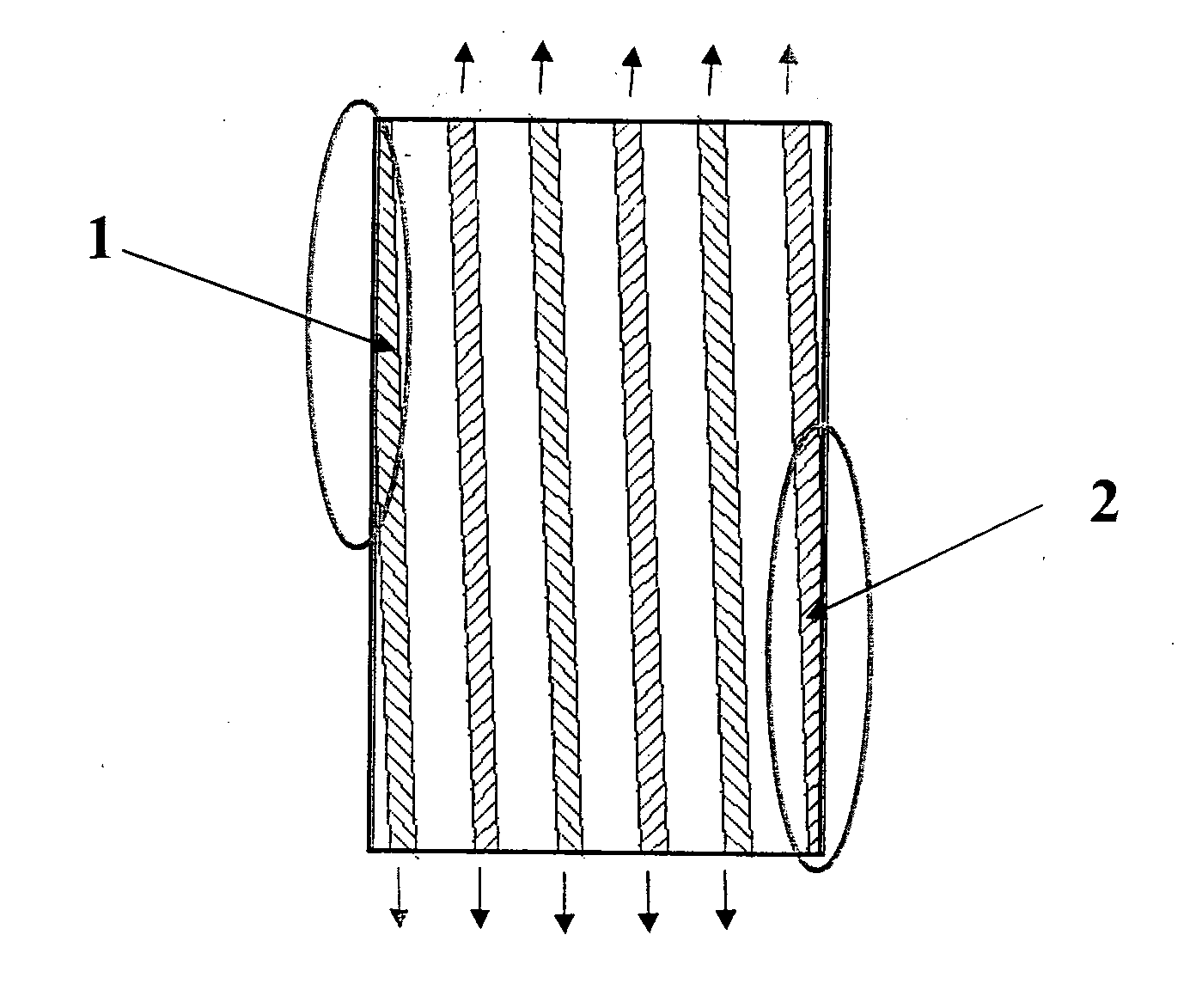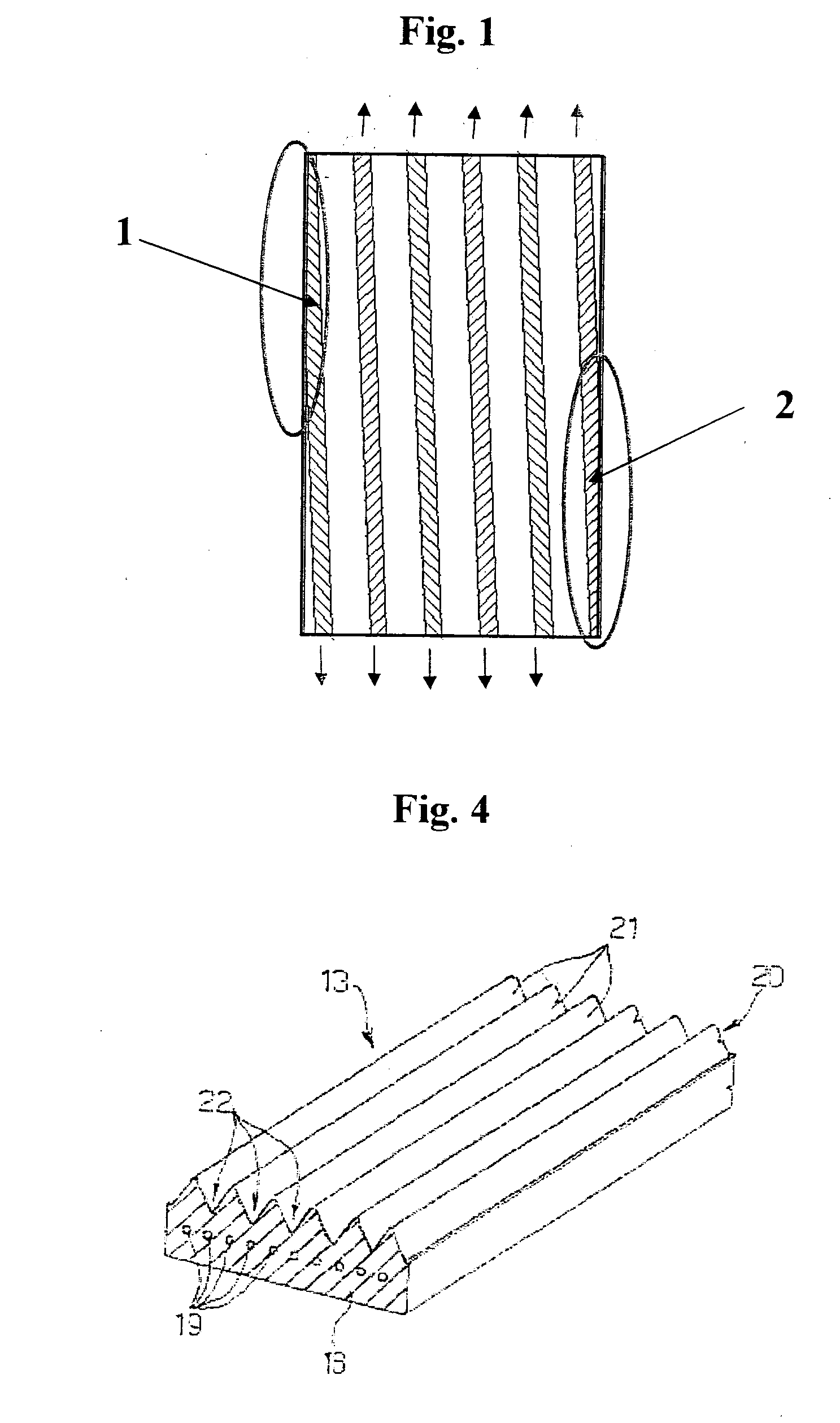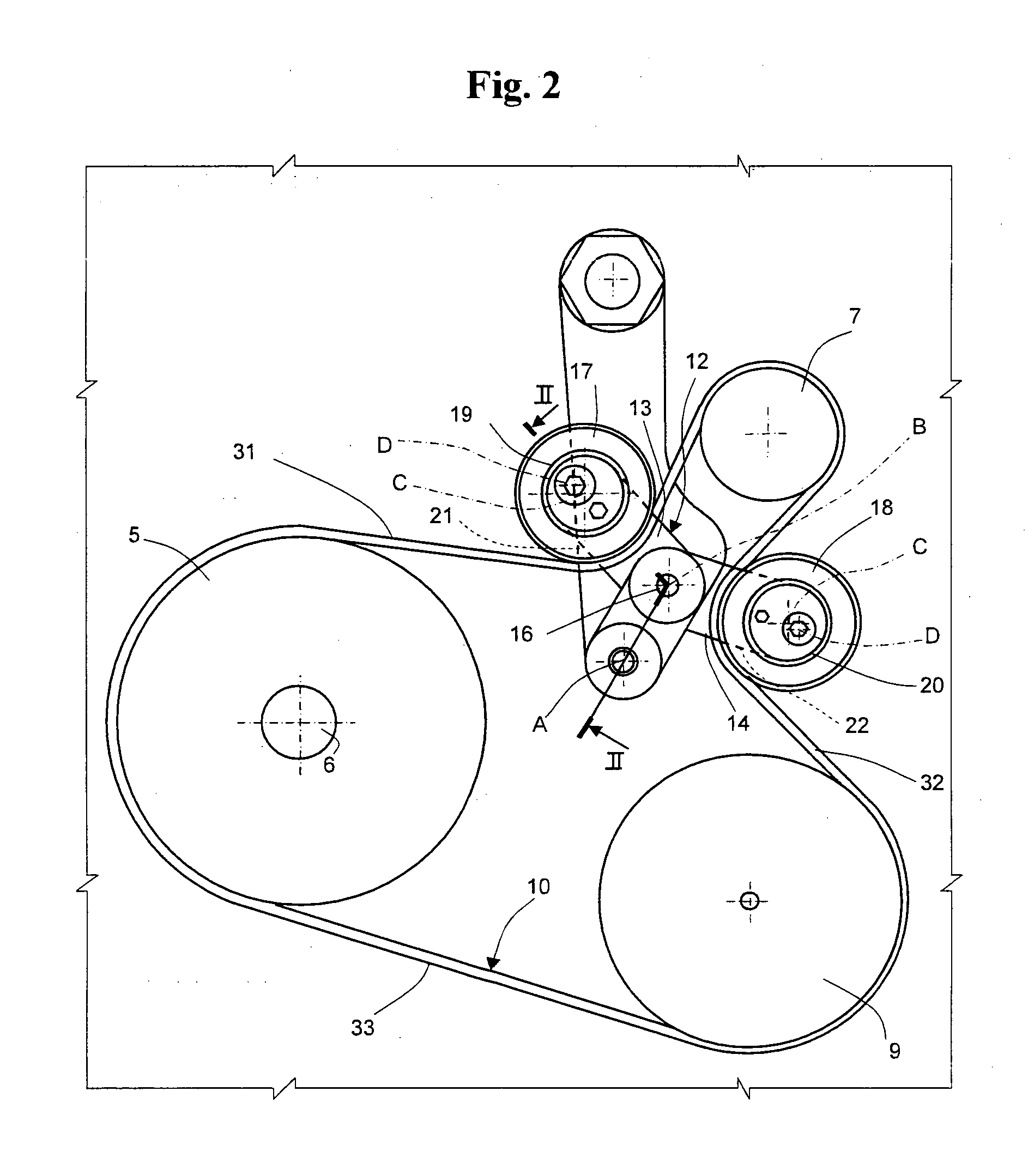Starter Alternator Assembly Comprising a Poli-V Belt and Poli-V Belt
a technology of starter alternator and poli-v belt, which is applied in the direction of v-belts, belts/chains/gearrings, mechanical instruments, etc., can solve the problems of fluctuating torque, affecting the and affecting the service life of the starter alternator
- Summary
- Abstract
- Description
- Claims
- Application Information
AI Technical Summary
Benefits of technology
Problems solved by technology
Method used
Image
Examples
examples 1-3
[0070]Elongation tests were conducted on resistant inserts of a belt made according to the invention and according to the known art.
[0071]The specifications of the tests derive from the SAEJ2432 standard, with the introduction of some modifications, given in what follows, in the dimensions of the pulleys and in the environmental conditions so as to render the testing conditions more stringent.
[0072]The belts were tested in the drive assembly envisaged by the standard and illustrated in FIG. 6, whilst the results of the tests are shown in FIG. 7.
[0073]The test was conducted by installing the belt and then setting a tensile force of the belt of 100 N / rib using a dead weight designated by D2 in the figure.
[0074]The belts tested had a body made of EPDM, three ribs, and an effective length of 1050 mm (whilst the standard envisages a length of 1200 mm).
[0075]The pulleys of the drive assembly had the following diameters:
D1 (drive pulley) 120 mm
D2 (idler) 45 mm
D3 (driven pulley) 120 mm
D4 (i...
examples 4-6
[0079]Tests were performed applying a tensile force set using an MTS dynamic pulsator, the instrumentation described in the patent No. EP1669637<), in a drive assembly as schematically illustrated in FIG. 8. Tests for measurement of the dynamic modulus on poly-V belts with said types of instrumentation are also described in the patent No. EP1669637, but said tests are extremely complex. The tests were conducted with a simplified procedure so as to ensure a better reproducibility.
[0080]The results of the tests conducted appear in FIG. 9, which compares poly-V belts comprising resistant inserts made according to the known art, and precisely of aramide, with poly-V belts comprising resistant inserts made of two different materials (hybrid inserts) and precisely with a carbon-thread structure wound by glass filaments as illustrated in FIG. 5 and resistant inserts made of carbon alone.
[0081]The materials and the characteristics of the cords appearing in the graph are given in the table b...
PUM
| Property | Measurement | Unit |
|---|---|---|
| Force | aaaaa | aaaaa |
| Force | aaaaa | aaaaa |
| Force | aaaaa | aaaaa |
Abstract
Description
Claims
Application Information
 Login to View More
Login to View More - R&D
- Intellectual Property
- Life Sciences
- Materials
- Tech Scout
- Unparalleled Data Quality
- Higher Quality Content
- 60% Fewer Hallucinations
Browse by: Latest US Patents, China's latest patents, Technical Efficacy Thesaurus, Application Domain, Technology Topic, Popular Technical Reports.
© 2025 PatSnap. All rights reserved.Legal|Privacy policy|Modern Slavery Act Transparency Statement|Sitemap|About US| Contact US: help@patsnap.com



